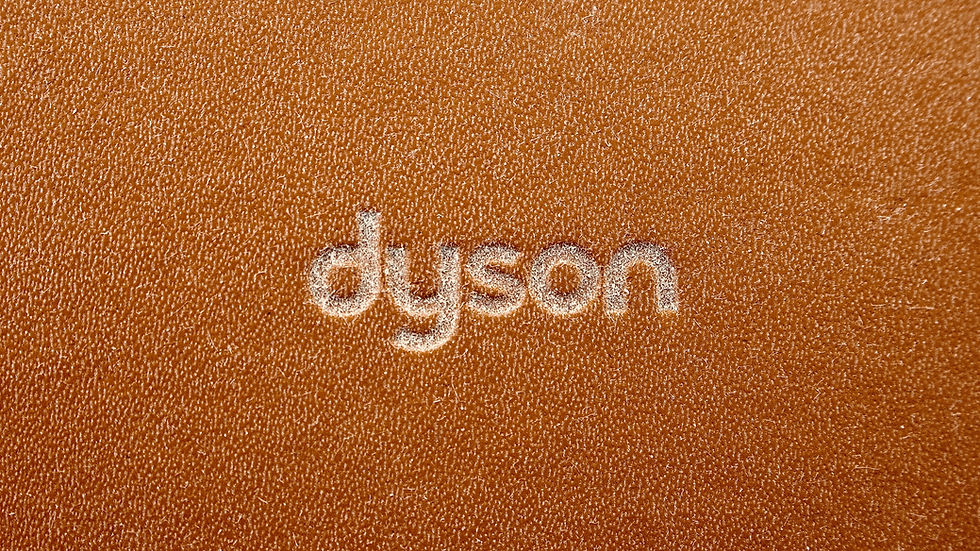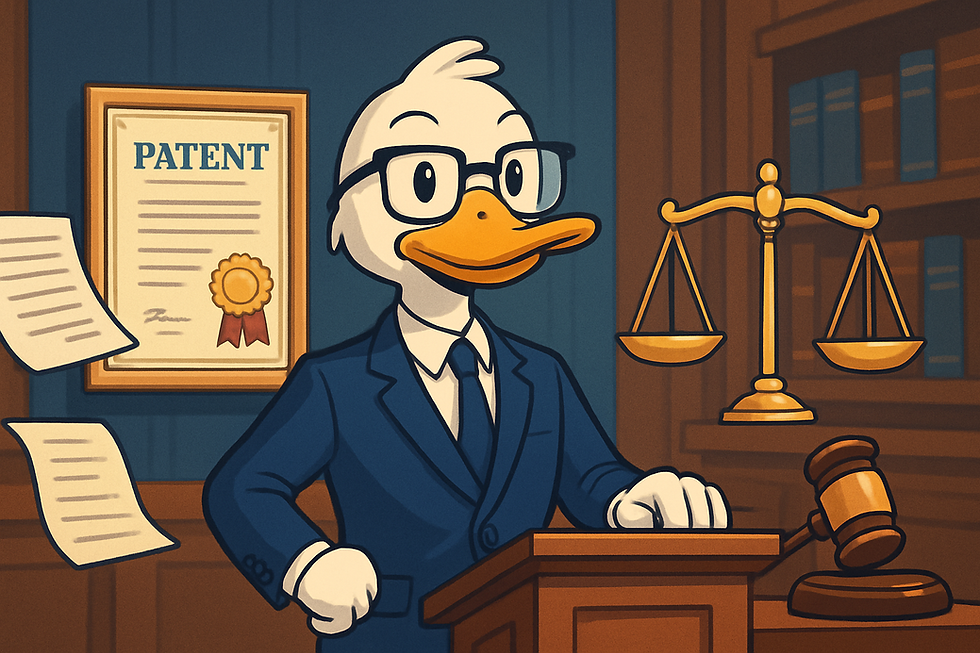Overcoming Prior Art Under U.S.C. §103 (Non-Obviousness)
- Sumit Negi
- Feb 18, 2020
- 6 min read
Updated: Aug 22, 2022

35 USC §103 describes the condition of patentability referred to as non-obviousness. It reads as follows: ‘’A patent for a claimed invention may not be obtained, notwithstanding that the claimed invention is not identically disclosed as set forth in section 102, if the differences between the claimed invention and the prior art are such that the claimed invention as a whole would have been obvious before the effective filing date of the claimed invention to a person having ordinary skill in the art to which the claimed invention pertains. Patentability shall not be negated by the manner in which the invention was made.’’
When a patent examiner is unable to find a single prior art reference that shows all elements of a particular claim, then the examiner will not reject your claim as lacking novelty under Section 102. The examiner may combine multiple prior art references to arrive at the claimed invention. The examiner will then reject the claimed invention under 35 USC §103 stating that the invention is obvious over the cited prior art. In other words, it is obvious to someone of ordinary skill in the art of invention to take the prior art invention of the primary reference and modify it with the teaching of the secondary reference to arrive at the claimed invention. Such a combination does not qualify for a patent in the eyes of the law.
How Does 35 USC §103 Work?
Exemplary Claim: A patterned synthetic sponge, which comprises: a synthetic sponge formed from an open cell, elastomeric material and bearing a pattern having ragged, torn edges, being at least about 0.5" in depth, said patterned synthetic sponge simulating a natural sea sponge when creating faux paint finishes.
Prior Art: An “Australian Application” discloses an artificial sponge of cellular structure for providing pattern effects on fresh paint any desired pattern character may be formed on the face of a sponge by removing portions of the face through cutting the patterned face may be a shape complementary to the pattern of floral or any other desired pattern. The Australian Application fails to teach the pattern having ragged, torn edges and the particular claimed pattern depth (0.5”).
Statements of Obviousness: Examiner rejected the claim under 35 U.S.C. 103 over the “Australian Application” with the following: • One of ordinary skill in the art would have understood how to modify the pattern depth to achieve the desired pattern character. • One of ordinary skill in the art would have recognized that Australian application depicts a non-linear pattern and that the cutting of a sponge would produce a "torn" or "ragged" edge.
History of 35 USC §103
The history of 35 USC §103 goes back to the Graham v. John Deere Co. - 383 U.S. 1, 86 S. Ct. 684 (1966) Case in which the United States Supreme Court clarified the non-obviousness requirement in the United States patent law. John Deere (Defendant) defended an infringement action on grounds of obviousness. Graham (Plaintiff) filed suit against Defendant, claiming patent infringement on a device that consisted of old mechanical elements that absorbed shock from plough shanks as they ploughed through rocky soil. In a prior case, The Fifth Circuit held that a patent was valid, ruling that a combination was eligible for a patent when it produced an “old result in a cheaper and otherwise more advantageous way.” The Eighth Circuit said the patent was invalid in the present case, as there was no new result or combination. Plaintiff petitioned for certiorari, and the Supreme Court granted the request in order to resolve the conflict. Graham v. John Deere Co., 383 U.S. 1, 148 USPQ 459 (1966) states the framework for the objective analysis for determining obviousness under 35 U.S.C. 103. Obviousness is a question of law based on underlying factual inquiries. The factual inquiries enunciated by the Court are as follows: • Determining the scope and content of the prior art; • Ascertaining the differences between the claimed invention and the prior art • Resolving the level of ordinary skill in the pertinent art.
Determining the Scope and Content of the Prior Art
In determining the scope and content of the prior art, one must first obtain a thorough understanding of the invention disclosed and claimed in the application under examination by reading the specification, including the claims, to understand what the applicant has invented. The scope of the claimed invention must be clearly determined by giving the claims the “broadest reasonable interpretation consistent with the specification. Once the scope of the claimed invention is determined, one must then determine what to search for and where to search.
1. What to Search for? The search should cover the claimed subject matter and should also cover the disclosed features which might reasonably be expected to be claimed. Although a rejection need not be based on a teaching or suggestion to combine, a preferred search will be directed to finding references that provide such teaching or suggestion if they exist.
2. Where to Search? For the purposes of 35 U.S.C. 103, prior art can be either in the field of applicant’s endeavour or be reasonably pertinent to the particular problem with which the applicant was concerned. When a work is available in one field of endeavour, design incentives and other market forces can prompt variations of it either in the same field or a different one, or solves a problem which is different from that which the applicant was trying to solve, may also be considered for the purposes of 35 U.S.C. 103. It is not necessary in order to establish a prima facie case of obviousness that both a structural similarity between a claimed invention and prior art be shown and that there be a suggestion in or expectation from the prior art that the claimed invention will have the same or a similar utility as one newly discovered by applicant.
Prior Art Search
One must articulate the following while doing a prior art search for the claimed invention under 35 USC §103:
Combining prior art elements according to known methods to yield predictable results.
Simple substitution of one known equivalent element for another to obtain predictable results.
Use of known techniques to improve similar devices (methods, or products) in the same way.
Applying a known technique to a known device (method, or product) ready for improvement to yield predictable results.
Known work in one field of endeavour may prompt variations of it for use in either the same field or a different one based on design incentives or other market forces, if the variations had been predictable to one of ordinary skill in the art.
If there was some teaching, suggestion, or motivation, either in the references themselves or in the knowledge generally available to one of ordinary skill in the art, to modify the reference or to combine reference teachings.
How to overcome 35 USC §103 obviousness rejection?
Here are some of the common ways to counter the 35 USC §103 obviousness rejection. • Amending claims: If the combination of prior art really does show all the elements of a particular claim, you can amend the claim to clarify a feature or to add an element. In conjunction with the claim amendment, you can argue that the combined prior art references fail to show the new claimed combination. • Teaching Away: Another way of arguing against a §103 rejection is to analyse the prior art references closely and find if the prior art teaches away from the combination. For example, if the primary reference explicitly states that certain features should be avoided, there would be no motivation to combine the primary reference with a secondary reference disclosing the very feature to be avoided.
• Claimed Invention as a Whole: In determining the differences between the prior art and the claims, the question under 35 U.S.C. 103 is not whether the differences themselves would have been obvious, but whether the claimed invention as a whole would have been obvious. In re Hirao, 535 F.2d 67, 190 USPQ 15 (CCPA 1976) (Claims were directed to a three-step process for preparing sweetened foods and drinks. The first two steps were directed to a process of producing high purity maltose (the sweetener), and the third was directed to adding the maltose to foods and drinks. The parties agreed that the first two steps were unobvious but formed a known product and the third step was obvious. The Solicitor argued the preamble was directed to a process for preparing foods and drinks sweetened mildly and thus the specific method of making the high purity maltose (the first two steps in the claimed process) should not be given weight, analogizing with product-by-process claims. The court held “due to the admitted non-obviousness of the first two steps of the claimed combination of steps, the subject matter as a whole would not have been obvious to one of ordinary skill in the art at the time the invention was made.
• All Element/Limitation Test: All the claim limitations must be considered when assessing patentability. If a claim limitation is not met by the prior art reference or other appropriate evidence, a rejection is inappropriate. Also, it is mandatory to consider an invention's functions in determining the meaning of particular claim language.
• Number of Finite Solutions: Show that there is no finite number of predictable solutions with anticipated success. Show how many choices the inventor had to make and how uncertain the outcomes of each choice were.
• Commercial Success: Proving commercial success for the product with registered increase in sales can help you to prove non-obviousness. Say, if you are in the wine industry, and you come up with a procedure to make the wine sweeter, and, as a result, you received more clients; if the procedure were truly obvious, it would have been done to death already and you would not have achieved commercial success due to it.



Comments